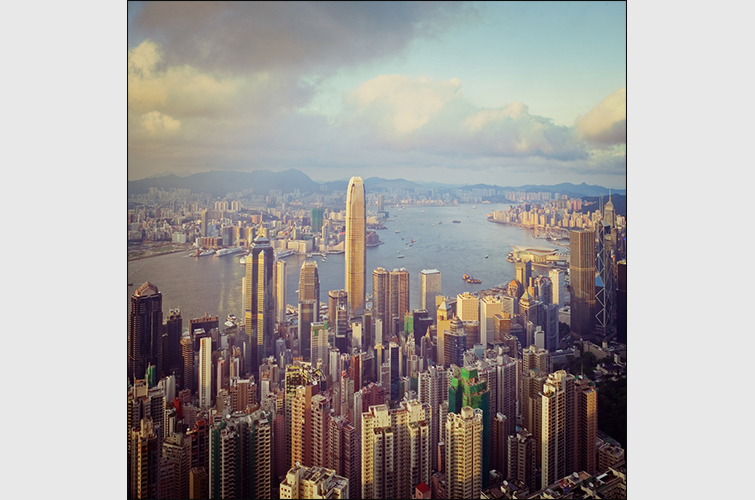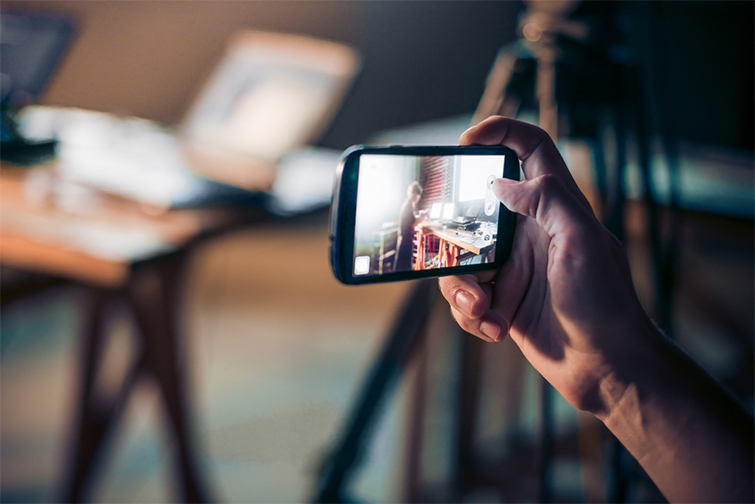
The 7 Rules for Creating Instagram-Ready Video Content
Thinking of posting your latest film or video content to Instagram? Follow these rules to get the most return for your efforts.
Cover image by rzoze19.
As of 2018, there are now over 25 million business profiles on Instagram, all competing for the attention of over 80 million personal users. As Facebook faces privacy concerns and Twitter becomes more polarized, Instagram has become one of the most powerful social media platforms for people and brands alike to share meaningful content.
For brand content creators, video professionals, and those just looking to share awesome personal Instagram video content, we offer these seven rules to create sleek, likable videos on Instagram.
1. Newsfeed vs. Stories

Image by Mary_ART_S.
First off, in the post-Snapchat era, there are now two types of content on Instagram. The first is the newsfeed, which is the traditional algorithm-based up-and-down scroll similar to other newsfeeds like Facebook and Twitter. The other is “stories,” the new click-through-style that presents friends’ stories in up to 15-second bursts that last for 24 hours.
If you aren’t familiar with the latter, take some time to get acquainted, as the two are vastly different types of content, each with its own rules and styles.
2. The Instagram Box

Image by travellight.
When working with video in the newsfeed mode, you’ll notice the famous Instagram box. While Instagram is no longer strict about it, the app still favors its iconic 1×1 ratio layout and encourages its users and brands to at least be aware of its roots.
When creating newsfeed video, you certainly don’t have to stick to 1×1 when shooting, editing, and uploading. You can shoot landscape or vertical, depending on your output. Here are the stats for maximum and minimum ratios and resolutions:
- Maximum aspect ratio: landscape (1.91:1), square (1:1), vertical (4:5).
- Minimum resolution: 600 x 315 pixels (1.91:1 landscape) / 600 x 600 pixels (1:1 square) / 600 x 750 pixels (4:5 vertical).
3. 60-Second Max

Image by Yulia Grigoryeva.
According to The Verge, Instagram is considering adding long-form video options to its app, but until then, they’ve been gracious enough to expand their newsfeed videos up to 60-seconds. While this may seem frustrating, it does keep the content short, sharp, and fresh. So, create content that excites from the get-go and doesn’t bottom out.
4. Thumbnails

Image by Bogdan Sonjachnyj.
Perhaps the most important element of any good Instagram video is a good thumbnail. Videos will live on on your Instagram page in the same boxes as photos, so your video thumbnail will be all that users see (at first) from then on. Even when scrolling, the thumbnail gives your viewer a first taste of the content. When uploading, Instagram allows you to scrub through and choose your thumbnail, so put your video in its best light!
5. Auto-Play Ready

Image by Foxy burrow.
Also of note, Instagram, like Facebook, plays videos automatically when users scroll across them. However, they all automatically play on mute. This means a couple of things for creators and producers: one, you have to have strong visual information at the very beginning (so no long fade-ins); and two, text becomes your friend for things like exposition or subtitles.
6. Mind the Loop

Image by Bon Appetit.
One cool thing about Instagram that other social media platforms have yet to adopt is the Instagram-loop. At the end of your content, Instagram doesn’t close your video, it just starts it over — similar to the now-defunct Vine app. This becomes especially fun when you have very short, bite-sized content, where you can play off the short motion. It also means you need to be mindful of your beginning and ending sequences so that they don’t transition awkwardly.
7. Exporting from Premiere Pro

Image by Joan B.
Exporting edited footage into Instagram used to be a chore, but as the app has embraced video and brand content, the process has become easier. Here are the latest specs to keep in mind when working on your edit:
- Supported video codecs: H.264 and VP8.
- Supported audio codecs: AAC, Vorbis.
- Maximum file size: 4GB.
- Maximum frame rate: 30fps.
- Bitrate: no limit when using two pass encoding with files under 1GB. 8 megabits per second for 1080p, 4 megabits per second for 720p.
For PremiumBeat’s full exporting-and-uploading workflow, check out our comprehensive breakdown. And for more Instagram filmmaking tips and tricks, check out these resources:






